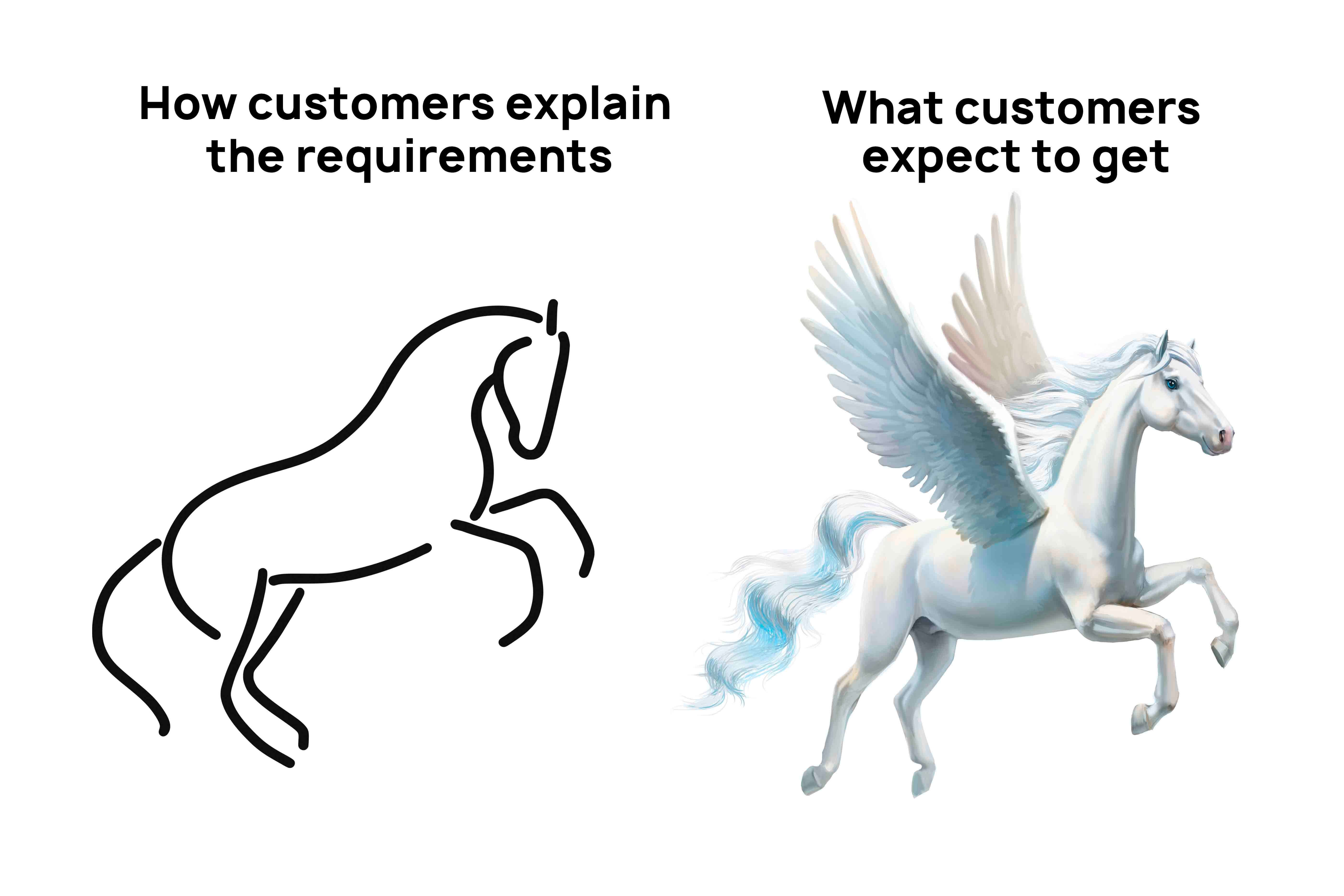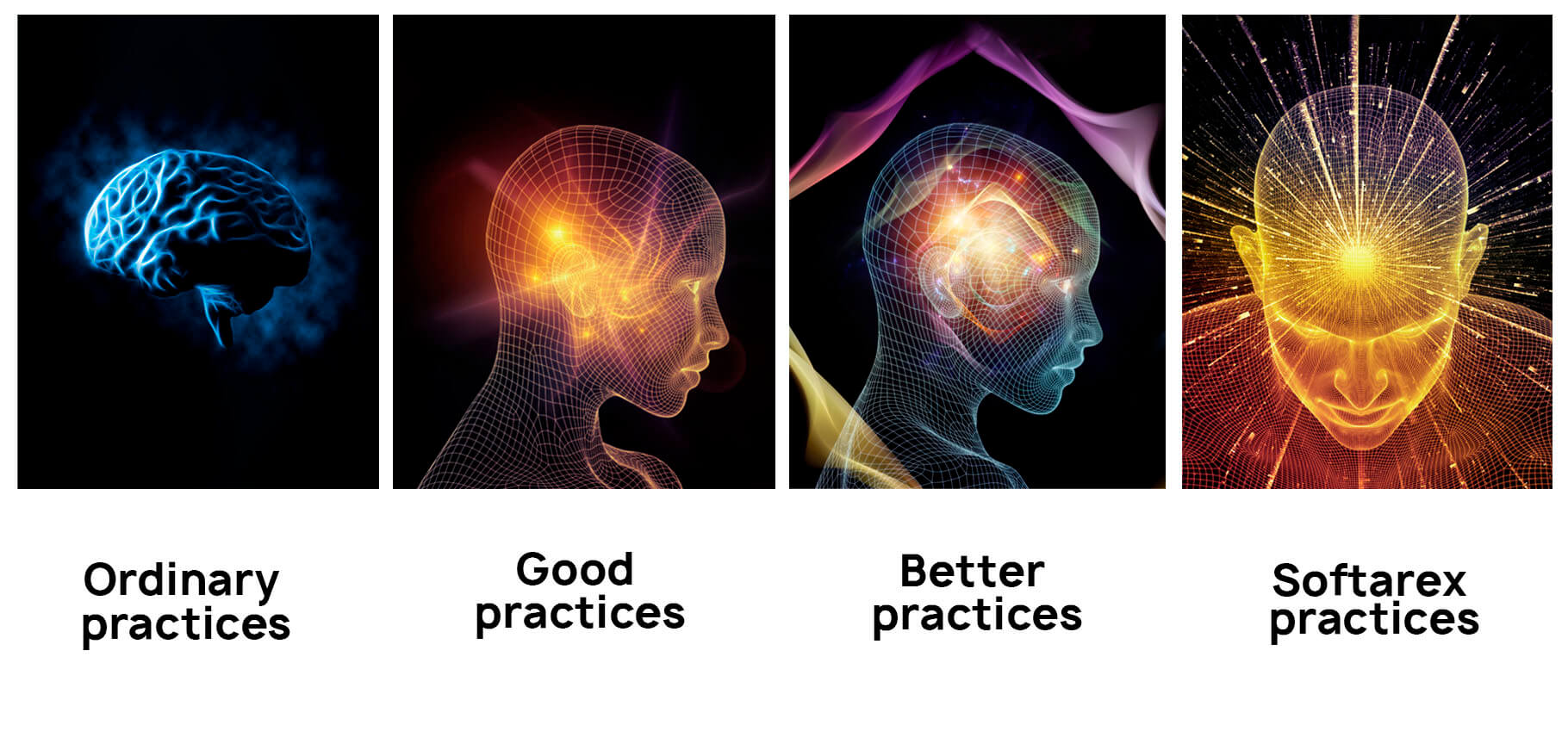Last week we covered when custom software is needed and what benefits it has over off-the-shelf solutions. Today, we invite you to dive deeper into the very process of creating tailored applications. Below, you’ll find tried-and-true development practices from Softarex experts that will be useful to you, as a business owner or manager, whether you build the software in-house or outsource development to a third-party service provider. Being more aware of all ins and outs, you’ll be able to coordinate the work, communicate with the development team, and monitor progress more effectively.
Define Requirements

Behind the need to create a custom solution there is always some specific challenge that off-the-shelf software can’t meet. Therefore, to develop a truly effective product you need to have a clear understanding of what you want to get from the software. Besides, according to statistics, nearly 70% of project failures result from poor requirements gathering.
Start by analyzing your current operations. What does your business need right now? What you should and can change? Ask yourself these and similar questions. But don’t make any assumptions or guesses. If you’re creating tailored applications for your marketing department — go straight to the marketing team and ask them about their needs and concerns. Your employees are the main source of valuable, first-hand information about the future solution.
Choose/Hire the Right Team
You can’t build a successful product without a successful team. Therefore, once the requirements for the software are ready, you need to think about who’s going to undertake your project. You have two options here: entrust the development to your internal team (or build one), or outsource the project. There’s no one-size-fits-all solution here. So make this decision based on your company’s capacities and project’s needs.
Some businesses choose to keep software development in-house believing it’s the easier of two evils. However, that’s not always the case. A Linkedin 2021 research found that it takes an average of 44 days to hire an information technology specialist. This process takes even longer if you need to build a team of up to 10 specialists from the ground up — the average size of a development team, according to the 2020 Scrum Guide. Moreover, the competition for talents is fierce and the best candidates for the job may already be hired.
If you already have a development team, we recommend that you realistically assess its capabilities. Ask yourself: “Do my employees have the skills, knowledge, and experience required for creating tailored applications?”. Your project may seem easy but eventually turn out much more difficult to implement and require solid technical expertise. So if your own developers won’t be up to the task, we recommend you consider outsourcing, especially if working on the project will pull them from their core functions and affect your operations. That way, you will save yourself from the headache of recruitment, and get a dedicated team built specifically for your project.
But choose meticulously. Once you have a shortlist of vendors, surf as many online resources as possible to narrow down your options. For example, Clutch provides information on companies’ average hourly rates, number of employees, minimum project size, experience, key clients, services, and technology focus with verified reviews from other customers. The more you know about your potential partner, the more confident you will feel.
Plan with Clear Milestones
Effective planning is the key to on-time and on-budget product delivery. If you outsource the development, your job as a customer is to make sure the company you hired chalk out a realistic plan with achievable milestones.
In partnership with all team members, an appointed supervisor should create a complete roadmap for the implementation that considers all time and budget constraints. Using it, you’ll be able to track the progress by reviewing work at each separate stage, pinpoint areas of improvement and ask for adjustments, if necessary.
Choose the Right Methodology

To ensure effective project management, bring structure to the development process, and facilitate collaboration within teams, all IT companies take various software development approaches or methodologies. Let’s take a closer look at the 2 main ones.
Waterfall
In this methodology, the software development process is broken down into phases, or sequences of tasks, each of which begins only after all the goals of the previous phase have been achieved. So, the tasks are cascading into each other, making the progress “flow” steadily downwards like a waterfall, hence the name.
This is the most traditional and strict approach, where the team can’t go back to the previous phase to make changes, which makes it suitable for smaller projects with clearly defined, well-documented requirements and static scopes.
Agile
Agile takes exactly the opposite approach to software development. It divides projects into user stories, informal explanations of software features written from the end-user perspective, prioritizes and then delivers them in short, usually two-week-long timeboxes called iterations.
It’s a much less formal method that focuses on improving communication within teams, frequent showcasing of working software to the customer, and flexibility to changes.
Agile is a set of principles and practices, and an umbrella term for many different software development methodologies, such as Scrum, Kanban, Lean, and Extreme Programming (XP).
Each of these approaches has its pros and cons, but both of them can help developers ensure effective project management. It’s up to you and your team to decide which one will work best for your project. Make this decision based on your business needs, and what methodology your team has more experience with.
Why Develop Custom Software with Softarex
For over 20 years now, Softarex has been creating tailored applications for businesses and organizations from an array of industries — from Healthcare and Energy to Online learning and Hospitality. We offer full-cycle software development services covering everything from requirements gathering to product deployment and maintenance, genuine customer care, and a team of dedicated professionals. We even develop our own tools to automate and improve code quality, such as codeNforcer: Source Code Analysis Tool — a solution designed to streamline code reviews and help teams maintain high standards across large codebases.
Softarex engineers are seasoned experts in the latest digital technologies — cloud computing, artificial intelligence, machine learning, neural networks, predictive modeling, and computer vision. They will gladly help you turn your boldest application idea into a tangible digital reality. Feel free to contact us to discuss your development needs.









